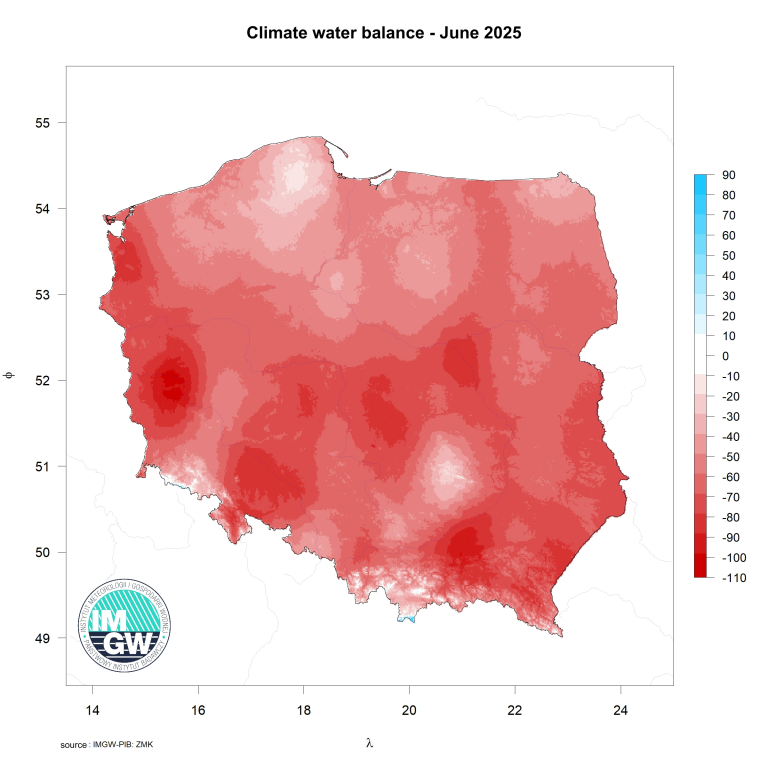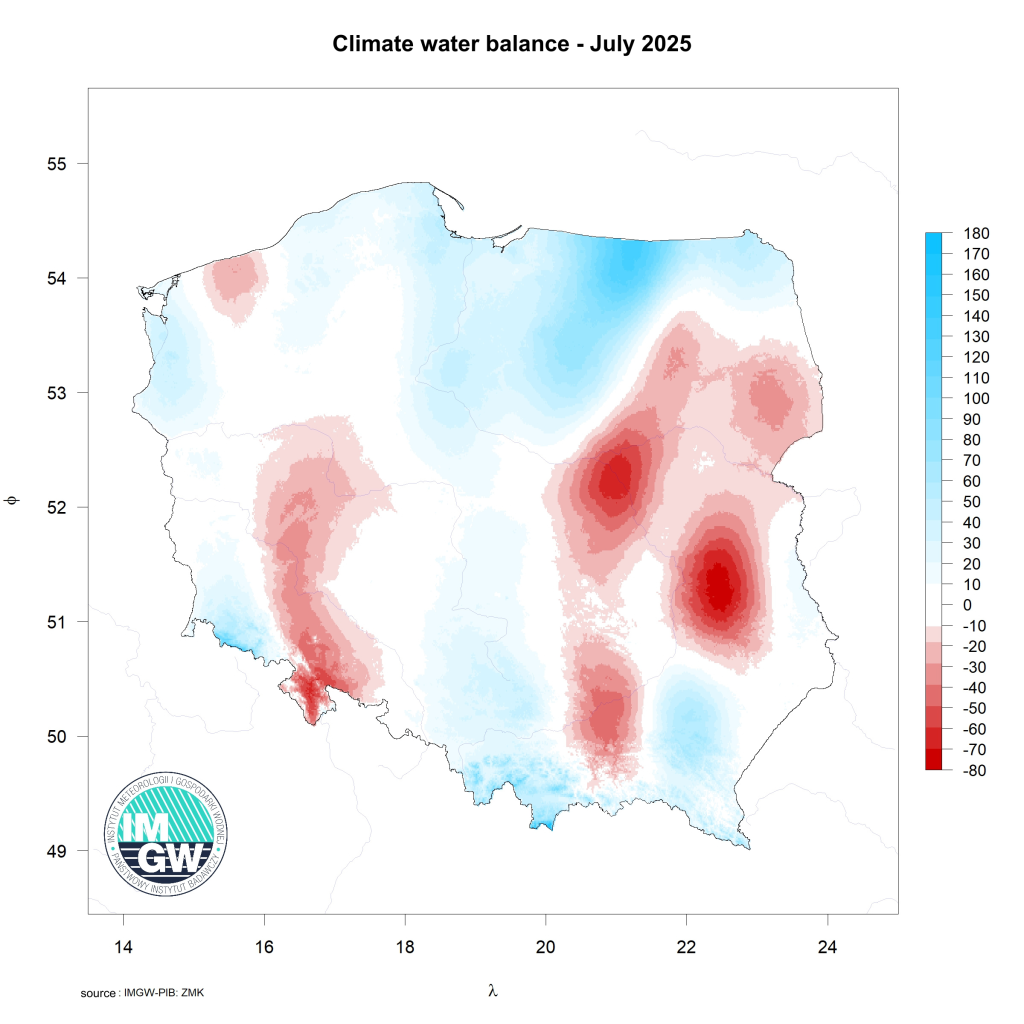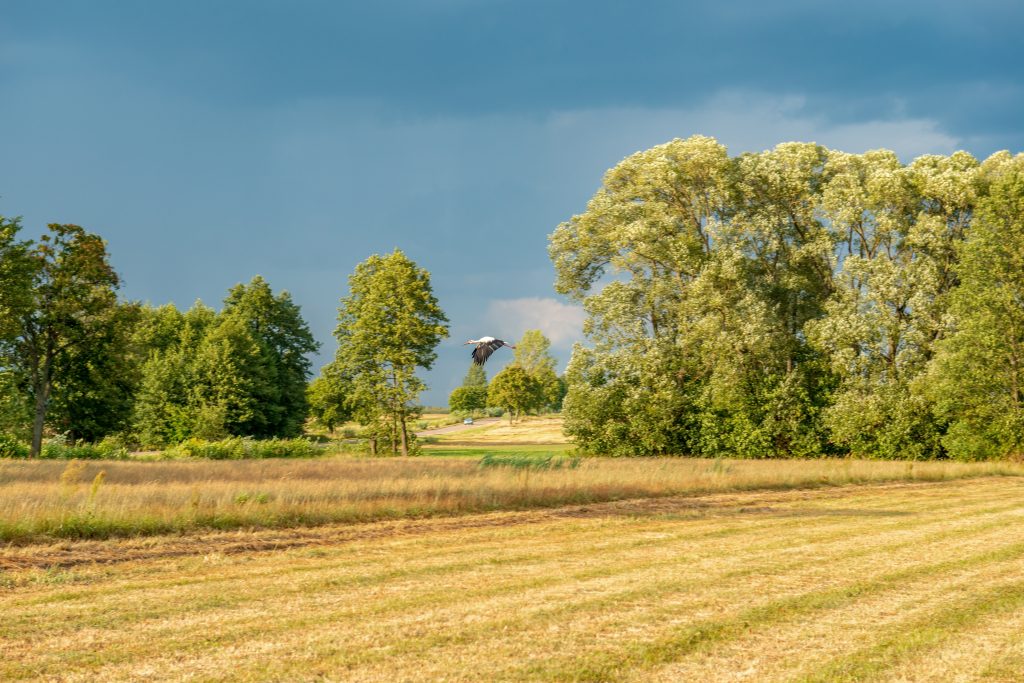The summer of 2025 was a particularly contrasting period in Poland in terms of water balance. Although the water balance indicator itself is complex and takes into account both inflows (including atmospheric precipitation, surface and groundwater recharge) and losses (evaporation, plant transpiration, surface runoff), in practice its development depends primarily on precipitation and air temperature, which influences the intensity of evapotranspiration (including evaporation from soil surfaces and water bodies, as well as plant transpiration).
Analysis of the summer months – June, July, and August – shows that hydrological conditions changed very dynamically. This weather pattern had a direct impact on agricultural conditions, the state of nature, and water management in various parts of the country. Data from the hydrological and meteorological monitoring systems of the Institute of Meteorology and Water Management – National Research Institute (IMGW-PIB) and agrometeorological services clearly indicate that despite the seasonal rainfall norm, regional water shortages and surpluses were significant.
June 2025 – A Dry Start to Summer
June 2025 was a dry month. The average total precipitation in Poland was approximately 58 mm, which, according to Z. Kaczorowska’s (1962) classification, is below normal and should be classified as a dry month (precipitation accounted for 84% of the June average). The situation was particularly severe in the central part of the country, where soil water shortages began to be clearly felt in the first half of the month.
The average temperature in June 2025 was approximately 17.7°C, 0.9°C above the long-term norm. This, combined with intense evapotranspiration, accelerated soil moisture loss. This resulted in increased water stress for crops and limited growth during the intensive maturation period. The first signs of drying were particularly noticeable in agricultural regions with light soils susceptible to drying. This phenomenon demonstrates that even a single month of low rainfall can significantly disrupt the local water balance. The rate of water replenishment in such conditions is crucial, especially in the context of preparing crops for the coming months.

July 2025 – a Month of Heavy Rainfall
July brought a marked change in weather conditions. The average temperature in Poland in July 2025 was 18.9°C, which is the standard value. Meanwhile, the average rainfall total reached around 115 mm (the normal rainfall range for July is 75-85 mm), making the month classified as very wet. Particularly characteristic were the intense, short-lived storms that occurred in many regions of the country. Although they brought welcome water, their rapid nature also caused negative consequences – local flooding, inundation, soil erosion, and rapid surface runoff, which limited the ability of rainwater to infiltrate deeper layers and recharge groundwater.
Despite this, July significantly improved the hydrological situation. In many regions – especially in central and southern Poland – the effects of the dry June were mitigated. Soil moisture levels increased, and many plants regained their productive potential. The water balance has improved, but not to the same extent everywhere. It’s important to remember that short-term, intense rainfall cannot permanently compensate for long-term water shortages – drought, particularly agricultural and hydrological, remains a persistent problem and requires a longer period of stable, moderate rainfall for the situation to improve permanently.

August 2025 – Weather Full of Contrasts
August brought further challenges – this time related to the very uneven distribution of precipitation across the country. For example, in northern Poland (including the Koszalin region) monthly rainfall totals exceeded 90 mm, which contributed to good soil saturation and continued favorable conditions for vegetation. In contrast, in the eastern regions of the country (including Włodawa) only 8 mm of rainfall was recorded, meaning almost no effective irrigation. The average air temperature in August 2025 in Poland was 18.1°C, 0.3 degrees Celsius lower than the long-term average for that month.
Strong spatial contrasts in precipitation meant that the water balance at the end of summer varied significantly across regions. In northern Poland, the hydrological situation was stable, and water resources improved. In the eastern part of the country, farmers continued to struggle with a deepening drought, and data from the IMWM-PIB Agrometeo system indicate prolonged periods of agricultural and hydrological drought in these areas.
Seasonal Balance? Not Quite…
In summary, the summer of 2025 in Poland was a picture of weather extremes. It began with a rainfall deficit and a growing water deficit, transitioning into a period of intensive water supply in July, only to end in August with uneven rainfall distribution and the recurrence of deficits in some areas.
Although seasonal rainfall (June–August) did not differ significantly from the long-term average, it was the temporal and spatial distribution of precipitation that proved to be the decisive factor in determining the water balance. Locally, both excesses and serious shortages of water occurred – this directly impacted the agricultural situation, groundwater levels, and the condition of water-dependent ecosystems. The first half of the year was dry, meaning that the summer rainfall (which was not significantly above normal) did not compensate for the deficit that had been building since the beginning of the year.
The summer of 2025 once again reminds us that when assessing water conditions, looking at total rainfall is not enough. When and where this water falls is crucial, because only even and moderate rainfall can truly support a sustainable water balance and mitigate the effects of drought.

 PL
PL

